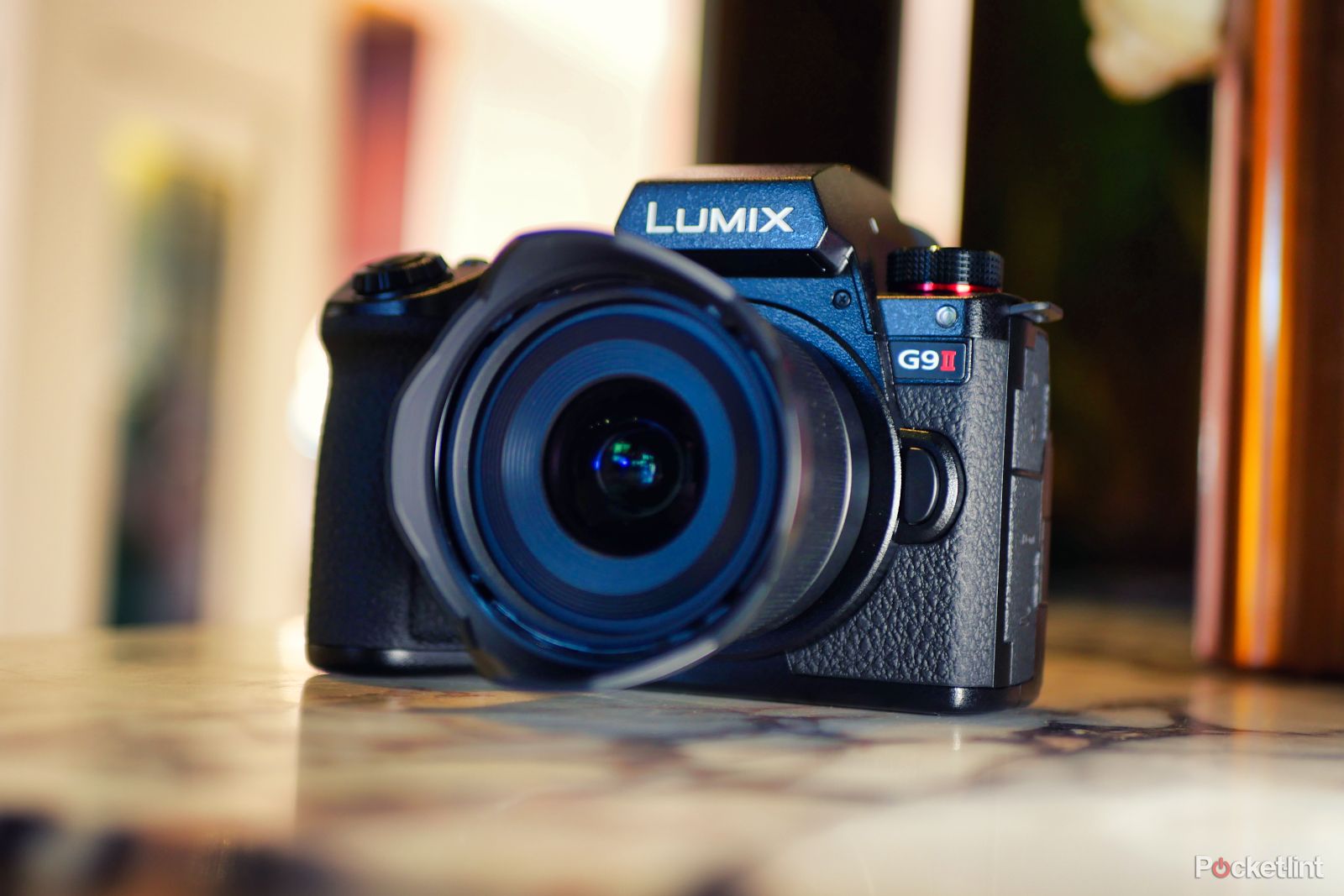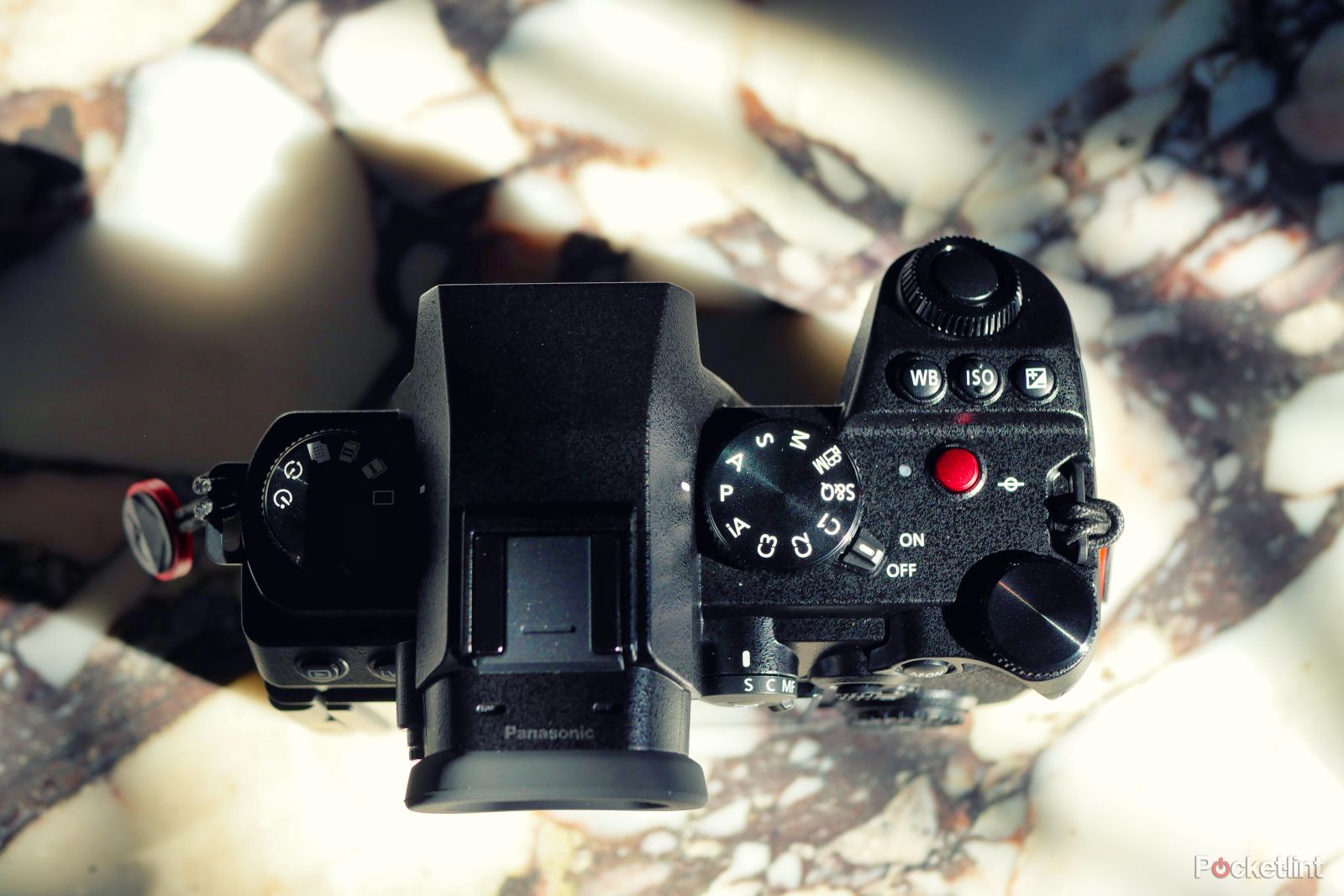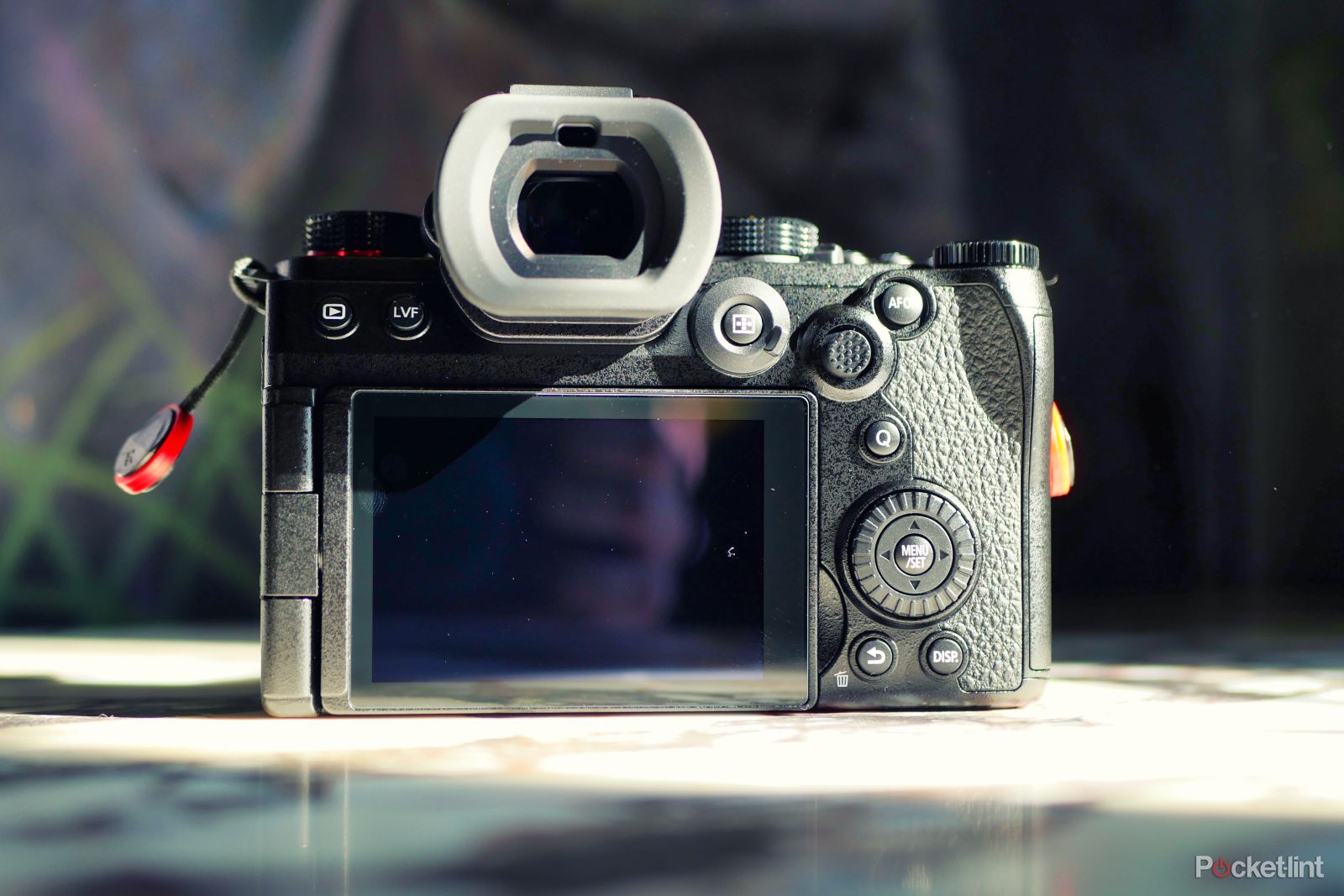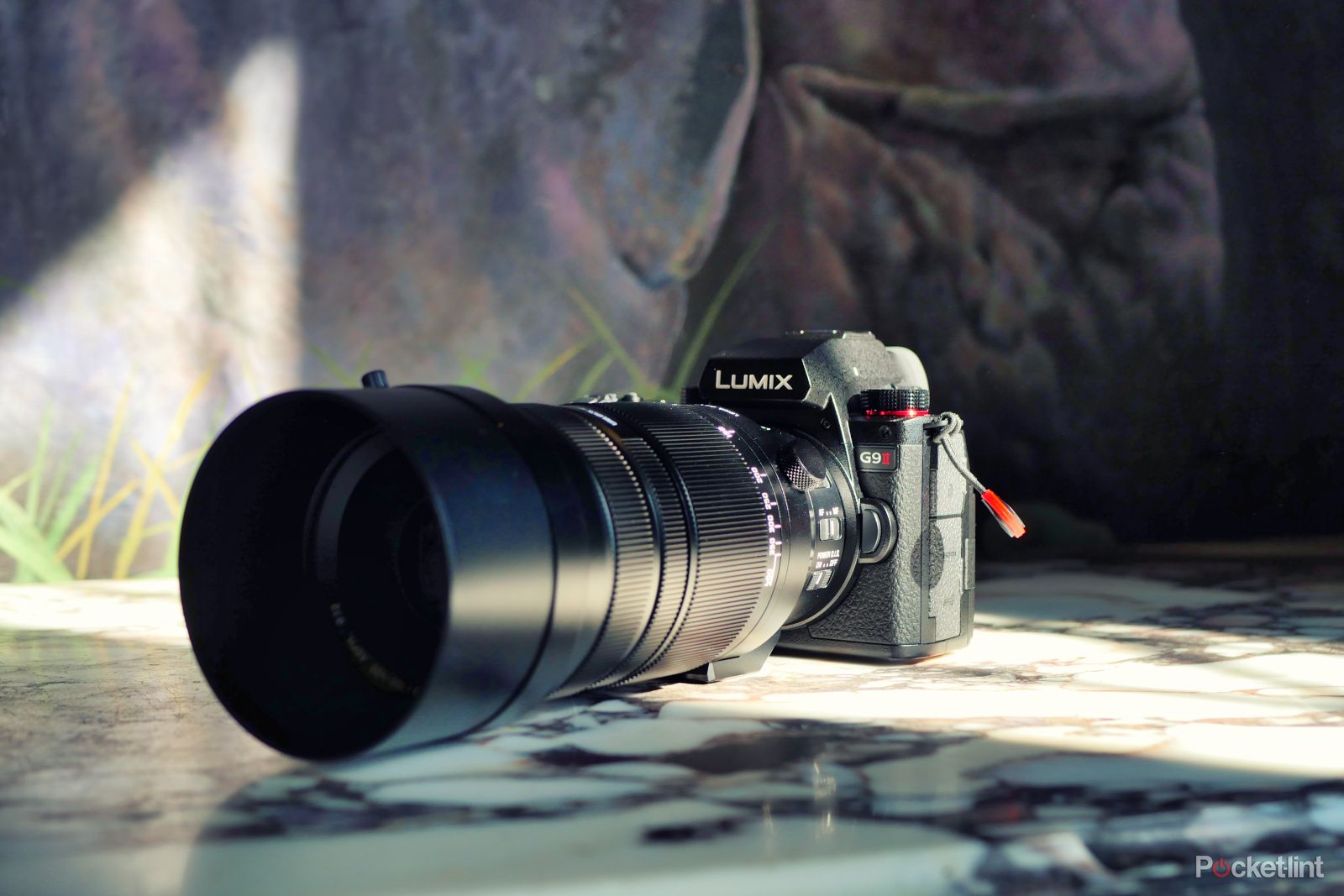It has been some time since we have had a brand new Micro 4 Thirds physique from Lumix, and with the model’s current concentrate on its full-frame cameras and lenses, many had been starting to surprise what the long run holds for the small type issue ecosystem.
These worries have confirmed to be unfounded, although, as with the discharge of the Lumix G9ii, which introduces section detect autofocus for the primary time, together with a few new lenses, the system is extra interesting than ever.
I received the chance to take the pint-sized powerhouse for an early check drive, and listed below are my first impressions.

Panasonic Lumix G9ii
First impressions
We have solely used the Lumix G9ii for a short while, however upon first impressions, we expect it simply may be one of the best Micro 4 Thirds physique ever made.
Worth and availability
The Lumix G9ii is priced at £1699 / €1899 in Europe and can start delivery later in November 2023. Contemplating that the Lumix GH6 carries a better MSRP, and remains to be offered at round this value, I can think about the G9ii being extraordinarily standard with anybody who has already invested in MFT glass.
Design
- Dimensions: 134.3×102.3×90.1 mm
- Weight: 658g
- Full-size HDMI, twin SD card slots, USB-C for energy and exterior recording
The Lumix G9ii adopts a brand new design that is rather less G9, and just a little extra S5II. Gone are the sloping angles on the highest panel, changed by a flat prime that appears a contact extra fashionable, in my eyes. Additionally gone is the LCD settings panel, which some customers are positive to overlook. As a replacement, you get a way more outstanding file button, which hints at this digicam’s hybrid chops, and a drive choose wheel, in addition to the standard PASM dial.
Across the again, issues are just a little extra acquainted, with a lot of the similar buttons current, even when they’ve shifted positions very barely. What’s new, although, is the AF-selection joystick, which now helps 8-direction enter, relatively than 4-directions on the unique G9. The placement of the attention sensor has moved, too. It is now on the prime of the EVF eyecup which ought to lead to fewer unintentional activations, and in my testing up to now, it appears to work as marketed.
The EVF is in any other case unchanged, however the flip-out touchscreen LCD display screen has been given a bump in decision. It is now 1840k dots in comparison with 1040k on its predecessor. In follow, it really works nicely, it isn’t more likely to blow your thoughts, however I am unable to think about anybody complaining about it, both.
With regards to connectivity, the G9ii is extraordinarily well-equipped. You get two SD card slots, a full-size HDMI output and separate headphone and microphone sockets. There is a USB-C port, changing the archaic micro-B port of the G9, and it is full-featured. You should utilize it to cost the digicam, energy it in use with USB-PD and even file on to a portable SSD.
Photographic efficiency
- 25.2MP photographs, 8-stop IBIS, PDAF
- As much as 75fps digital shutter / 14fps mechanical
- 100MP handheld excessive res mode, As much as 1.5-sec pre-burst
The G9ii is able to capturing 25.2MP photographs, up from 20.33MP on the G9, however that is not the thrilling half. As a substitute, the massive draw right here is the transfer to a section detection autofocus system, identical to we noticed on the S5ii / S5iiX. That is one thing that Micro 4 Thirds shooters have been begging for for years, and it has lastly arrived.
The opposite massive distinction is the improved in-body picture stabilisation system, which now compensates for as much as 8 stops of motion, in comparison with 6.5 stops on the older mannequin. My testing session passed off in the course of the day, and on a really sunny day at that, so I did not have the chance to push the IBIS to its limits, however I am wanting ahead to discovering out extra after we get a retail mannequin in for testing.
One other benefit of this improved IBIS is that it permits the seize of 100MP stills by shifting the sensor – and it will possibly do it handheld. Often, this method requires the digicam to be positioned on a tripod, so that is fairly a novel addition. That is one other function that I’ve nonetheless but to strive, however I am wanting ahead to seeing the way it works within the full evaluation.
Additionally new to this mannequin is the inclusion of 19 built-in photograph types, which work lots like Fujifilm’s movie simulation modes. Crucially, the checklist consists of Leica Monochrome, a well-liked profile with those that shoot on Leica’s expensive digital our bodies – and it is nice to see it seem on this comparatively inexpensive Lumix possibility.
My hands-on session passed off at a safari park, and I shot nearly solely with the Lumix 100-400mm f4-6.3 ASPH to rise up shut and private with the animals. The digicam was put into animal eye-detect autofocus mode and it did a sterling job with even probably the most unusual-looking creatures. The one actual hiccups occurred when an animals was behind a wire fence, however that is typical of nearly each autofocus system on the market.
I am going to want to check the digicam in a greater diversity of lighting, and with some topics that are not animals, earlier than delivering any sort of significant verdict, however because it stands, I am impressed. I primarily shoot on a GH6, and the picture high quality may be very comparable, actually, it is in all probability the identical sensor. Nevertheless, the autofocus is on an entire new stage, which implies the share of usable pictures captured was means greater than I am accustomed to.
Video efficiency
- As much as 5.3K60 / 4K120 in 10 bit 4:2:2
- Inside ProRes recording, V Log and anamorphic help
- Improved lively picture stabilisation with perspective distortion correction
Although the G9 was initially pitched as a photography-first digicam, the traces are really blurred with the G9ii, this digicam is simply as spectacular for video, if no more spectacular. Lumix has included all the pieces you possibly can need and extra, together with exterior SSD recording, high-framerate video, 10-bit 4:2:2 color in most modes and V Log put in proper out of the field.
In comparison with the present MFT video favorite, the GH6, it appears the one main distinction is a barely decrease framerate at 1080p (240fps relatively than 300fps) and the dearth of a fan to maintain issues cool below prolonged capturing. For what it is value, I by no means noticed any overheating warnings capturing in direct daylight with G9ii, however this was with admittedly brief clips.
I primarily caught to photographs for my temporary testing session, however I did seize a number of 4K 120fps clips and I am very impressed with the standard. In fact, these clips had been additionally shot with animal eye-detect autofocus, and it carried out brilliantly, particularly contemplating the difficult circumstances of capturing by fences.
Stabilisation appears to be like good from what I can inform, too, however with such an extended lens hooked up the IBIS was working time beyond regulation. I am wanting ahead to seeing the way it fares within the 12-35mm zone, as I’ve a sense it should impress.
First impressions
The Panasonic Lumix G9ii is shaping as much as be one of the best Micro 4 Thirds digicam so far. The arrival of phase-detect autofocus is a game-changer, and the IBIS has the potential to be a few of the finest in enterprise, too. To not point out the value, which may be very aggressive, particularly with specs comparable to these.
In the event you like the concept of carrying smaller, lighter and extra inexpensive lenses, with out sacrificing usability or picture high quality, then this has the potential to be the digicam of alternative. It is secure to say I am enthusiastic about it, however I am going to reserve correct judgment till I’ve had extra time with it. Maintain an eye fixed out for the complete evaluation.
Trending Merchandise

Cooler Master MasterBox Q300L Micro-ATX Tower with Magnetic Design Dust Filter, Transparent Acrylic Side Panel, Adjustable I/O & Fully Ventilated Airflow, Black (MCB-Q300L-KANN-S00)

ASUS TUF Gaming GT301 ZAKU II Edition ATX mid-Tower Compact case with Tempered Glass Side Panel, Honeycomb Front Panel, 120mm Aura Addressable RGB Fan, Headphone Hanger,360mm Radiator, Gundam Edition

ASUS TUF Gaming GT501 Mid-Tower Computer Case for up to EATX Motherboards with USB 3.0 Front Panel Cases GT501/GRY/WITH Handle

be quiet! Pure Base 500DX ATX Mid Tower PC case | ARGB | 3 Pre-Installed Pure Wings 2 Fans | Tempered Glass Window | Black | BGW37

ASUS ROG Strix Helios GX601 White Edition RGB Mid-Tower Computer Case for ATX/EATX Motherboards with tempered glass, aluminum frame, GPU braces, 420mm radiator support and Aura Sync

CORSAIR 7000D AIRFLOW Full-Tower ATX PC Case – High-Airflow Front Panel – Spacious Interior – Easy Cable Management – 3x 140mm AirGuide Fans with PWM Repeater Included – Black











